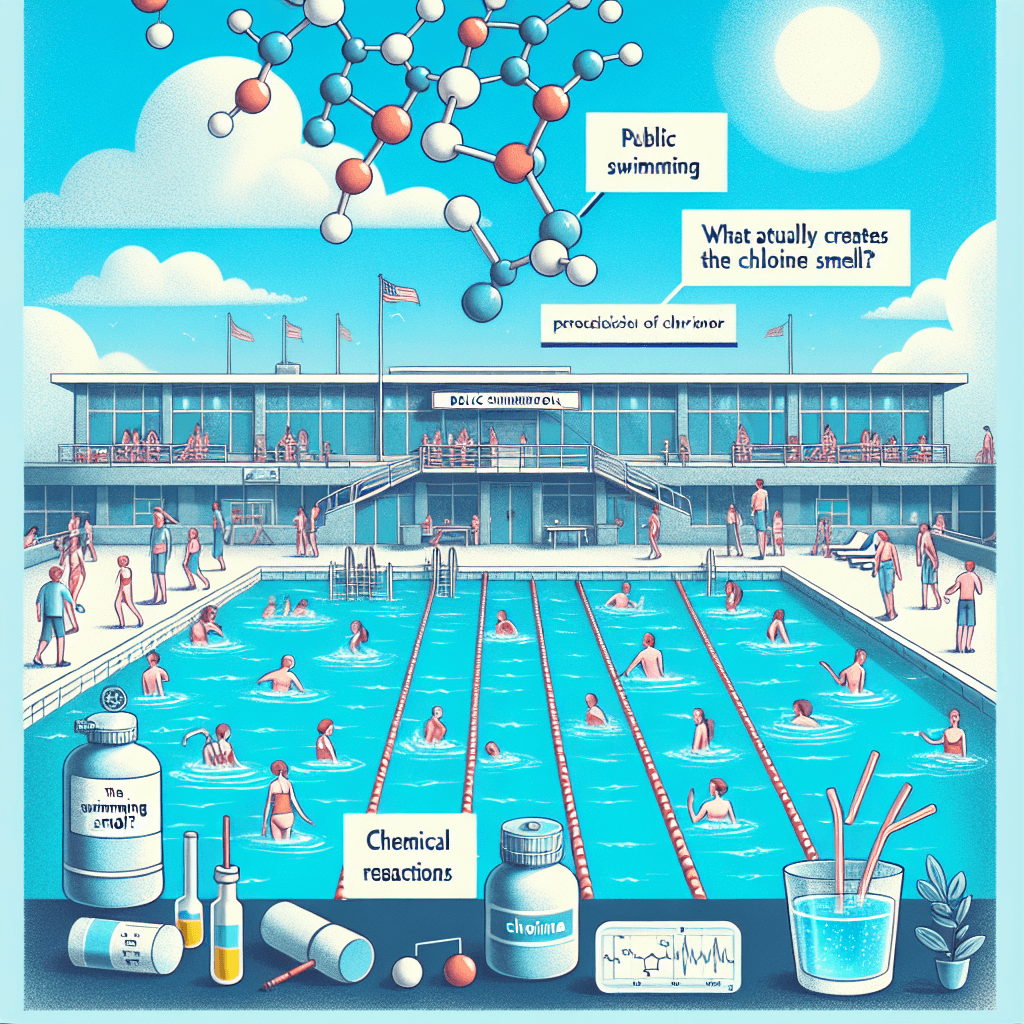What actually creates the distinct chlorine smell at a public swimming pool
Spoiler alert: that powerful 'chlorine' smell isn't a sign of a clean pool—it's the scent of a chemical battle between the disinfectant and what swimmers leave behind.


Too Long; Didn't Read
TLDR: The strong pool smell isn't actually chlorine. It's the scent of chloramines, a chemical compound created when chlorine mixes with sweat, oils, and urine from swimmers. A stronger smell means the pool is dirtier.
The Pool Smell Paradox: What Actually Creates the Distinct Chlorine Smell at a Public Swimming Pool?
Walk into any indoor public pool, and your senses are immediately hit by a familiar, potent chemical aroma. For most of us, that sharp scent is the very definition of a swimming pool—a smell we instinctively associate with cleanliness and safety. But what if that “chlorine” smell is telling you the exact opposite of what you think? The truth behind this iconic scent is a fascinating lesson in chemistry that might change how you view your next swim. This post will uncover what actually creates that distinct pool smell and reveal what it truly signifies about the water's condition.
It's Not the Chlorine, It's the Chloramines
The single biggest misconception about the pool smell is that it comes from the chlorine itself. In reality, a properly balanced and clean swimming pool has very little odor. The chlorine you’re smelling is not the disinfectant doing its job quietly and effectively; it’s the smell of a chemical battle taking place in the water.
The true culprits behind the pungent aroma are chemical compounds called chloramines. These are formed when the free chlorine used to disinfect the pool water combines with nitrogen-containing compounds introduced by swimmers. In other words, the smell is a byproduct of chlorine neutralizing contaminants. The stronger the smell, the more contaminants there are for the chlorine to fight.
The "Secret" Ingredient: What Swimmers Bring into the Pool
So, where do these nitrogen compounds come from? The answer is simple: us. Every person who enters the pool brings a variety of organic materials on their body that react with chlorine to form chloramines. According to the U.S. Centers for Disease Control and Prevention (CDC), these substances include:
- Sweat and Urine: Both contain urea and ammonia, which are rich in nitrogen.
- Body Oils and Lotions: Skincare products on our skin readily mix with the water.
- Dead Skin Cells: The human body is constantly shedding skin.
- Cosmetics and Hair Products: Traces of makeup, deodorant, and shampoo contribute to the chemical load.
When chlorine encounters these nitrogen-based compounds, a chemical reaction occurs, creating different types of chloramines (monochloramine, dichloramine, and trichloramine). It is primarily trichloramine that is volatile enough to escape the water as a gas and produce the signature "pool smell."
Why a Strong "Chlorine" Smell Is a Bad Sign
Here lies the paradox: a strong chemical smell doesn’t indicate a clean pool, but rather a pool with a high level of contaminants that the chlorine is struggling to manage. This has two significant implications for swimmers.
First, when chlorine binds into chloramines, it becomes a less effective sanitizer. The "free available chlorine" is the active form that kills germs, but chloramines are "combined chlorine," which is up to 80 times less effective at disinfecting. A pool heavy with chloramines may not have enough free chlorine to adequately protect swimmers from harmful bacteria and viruses.
Second, chloramines are irritants. They are the primary cause of the red, stinging eyes and dry, itchy skin swimmers often experience. For indoor pools, poor ventilation can trap these gaseous chloramines above the water's surface, leading to respiratory irritation, coughing, and even triggering asthma attacks in sensitive individuals.
Keeping the Smell (and the Problem) at Bay
Pool operators work constantly to manage chloramine levels through a process called "superchlorination," or "shocking" the pool. This involves adding a large dose of chlorine to break down the chloramine bonds and restore the level of free, germ-killing chlorine. Proper ventilation in indoor facilities is also crucial to prevent the buildup of airborne irritants.
However, swimmers play the most critical role. A simple, one-minute pre-swim shower with soap can rinse off the vast majority of sweat, oils, and other substances on your skin, significantly reducing the amount of contaminants you introduce into the water.
In conclusion, the distinct smell of a public pool isn't a sign of cleanliness but a chemical cry for help. It’s the scent of chloramines, born from the reaction between disinfectant and the organic matter we bring into the water. A truly clean and well-managed pool should have a neutral, almost unnoticeable scent. So, the next time you're at the pool, remember that the best way to ensure a pleasant and healthy swim for everyone is to contribute to its cleanliness by showering first. You'll be helping to keep that "chlorine" smell, and the irritants it represents, out of the air and out of the water.


